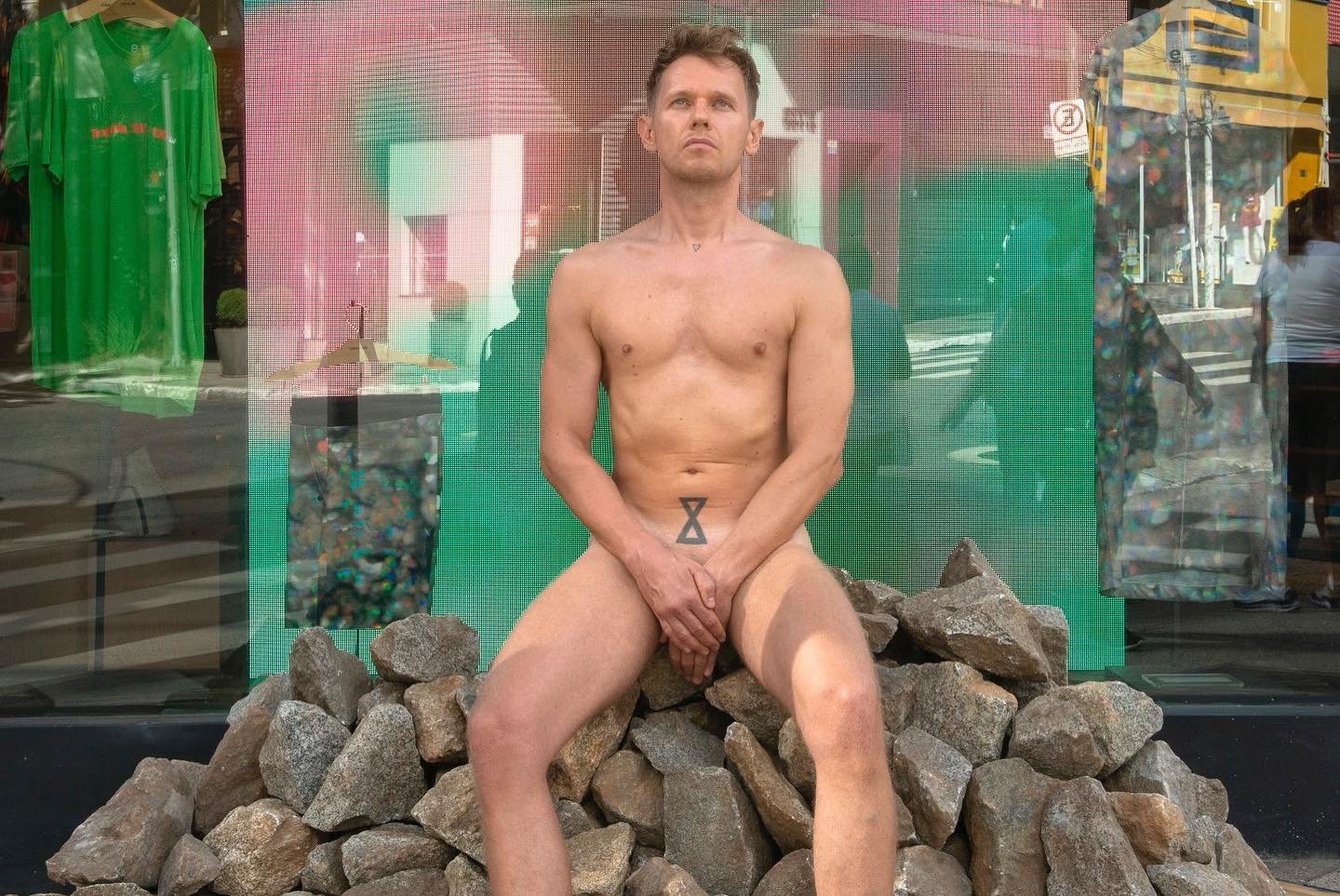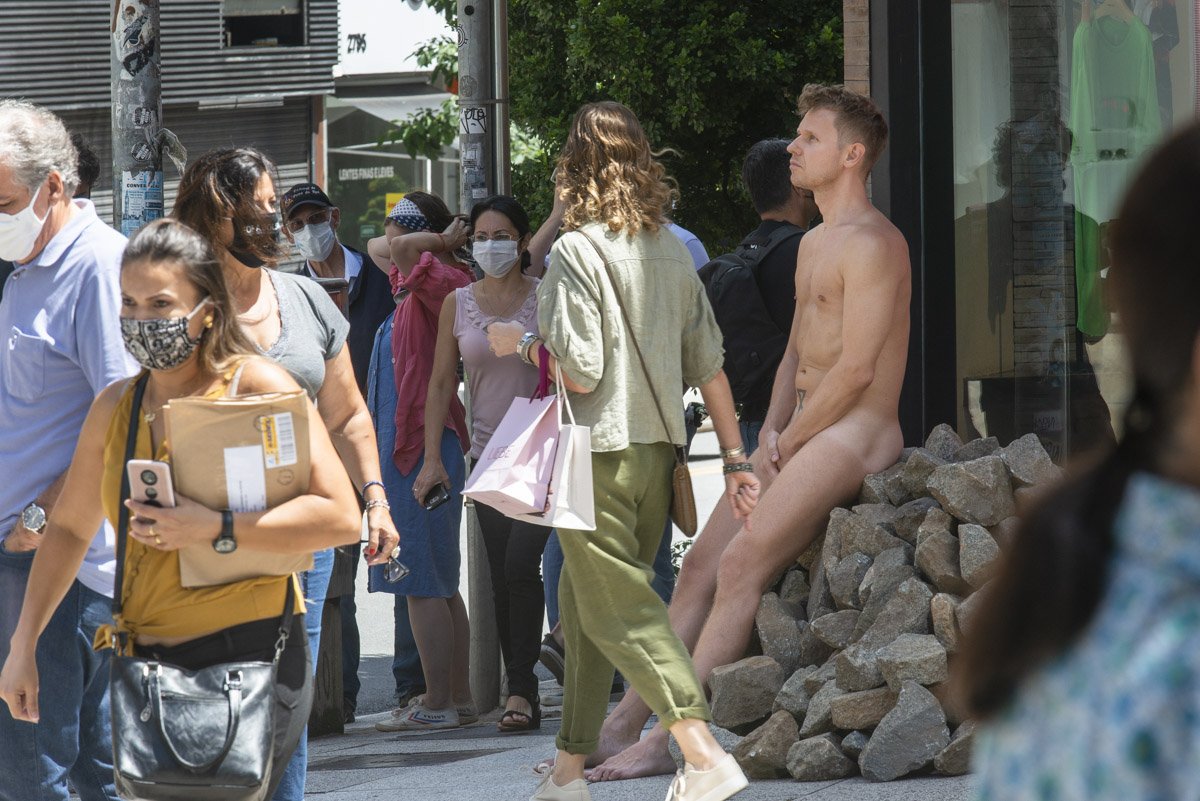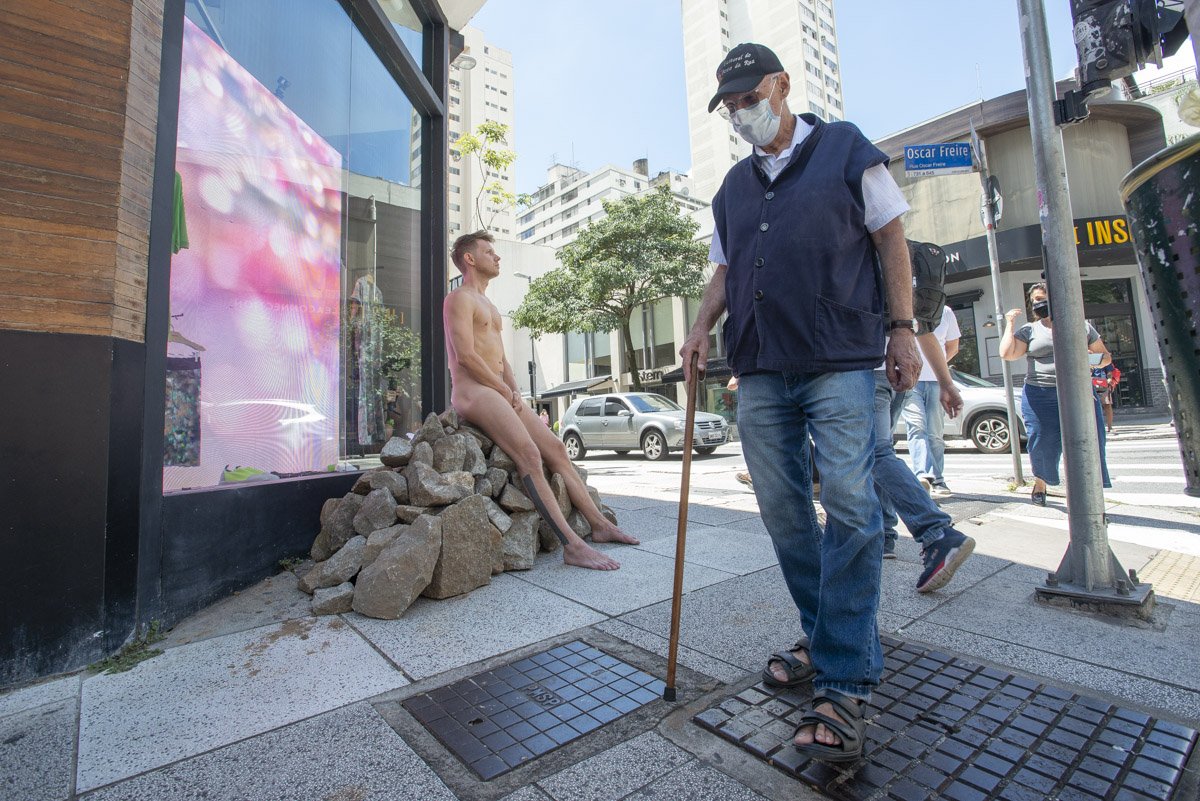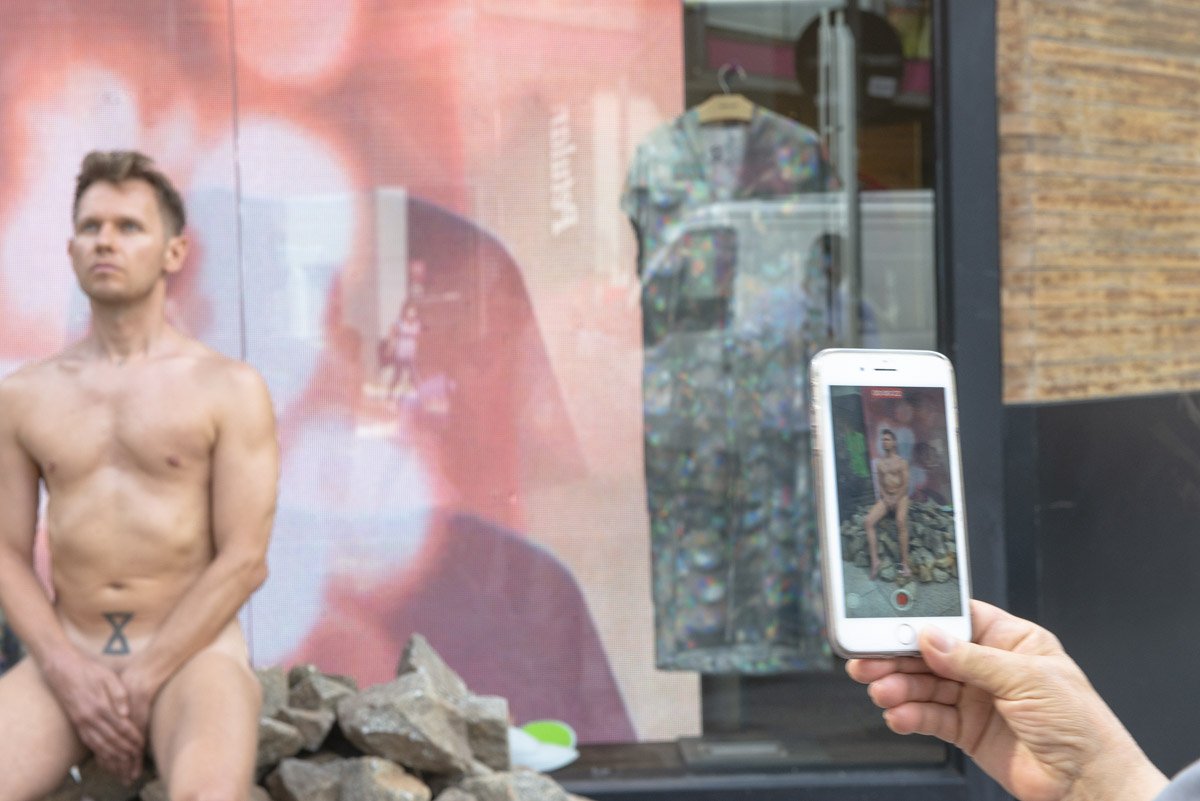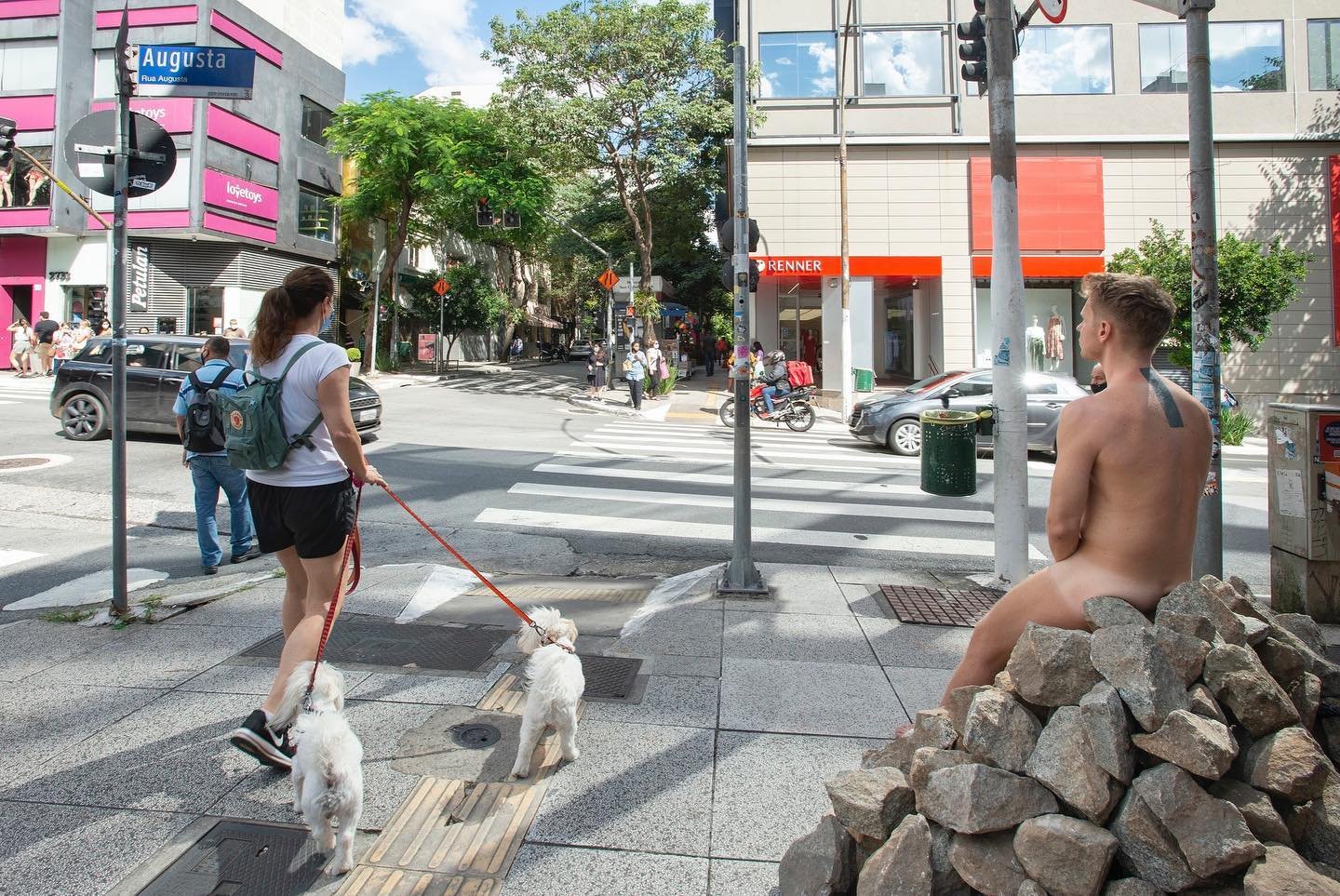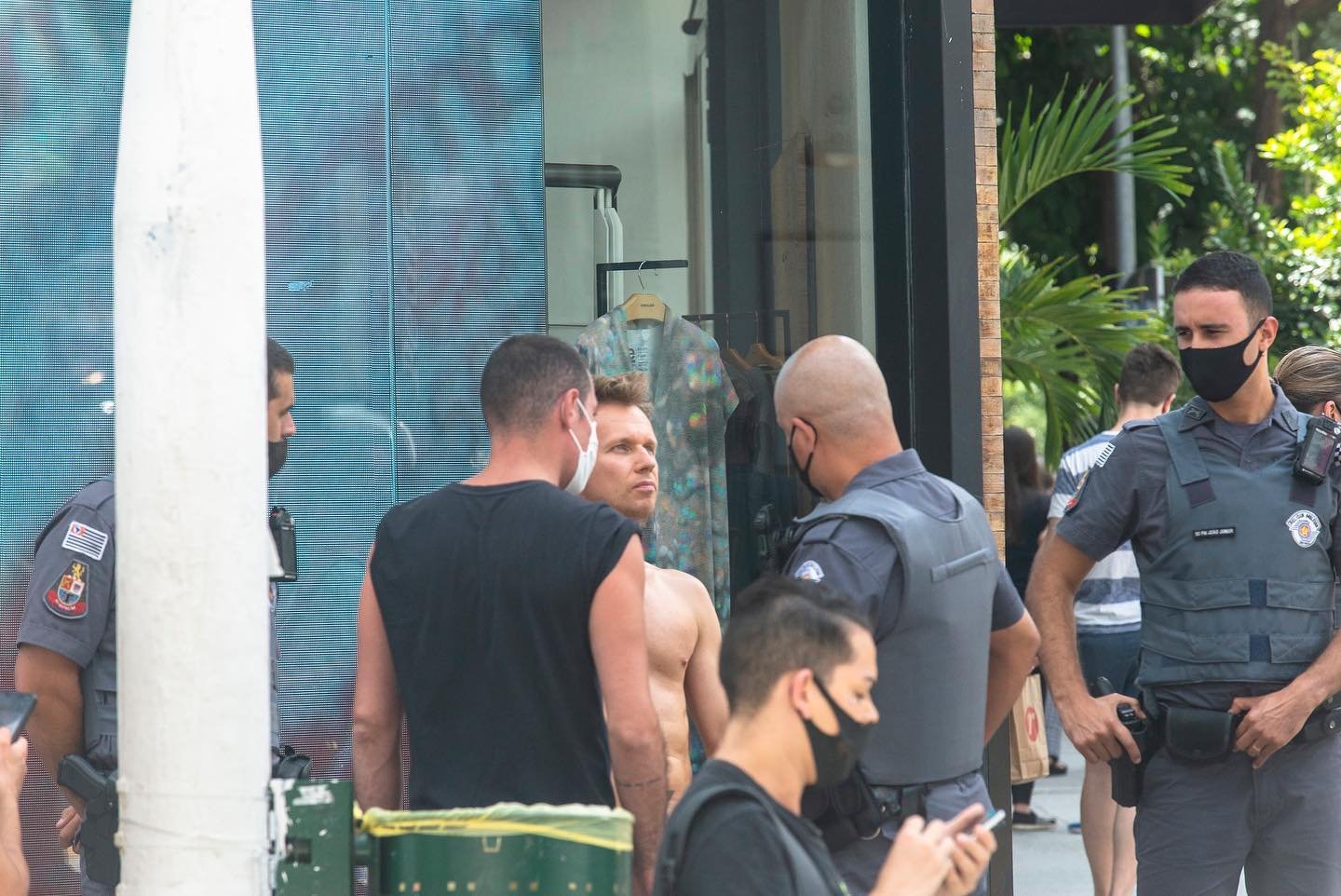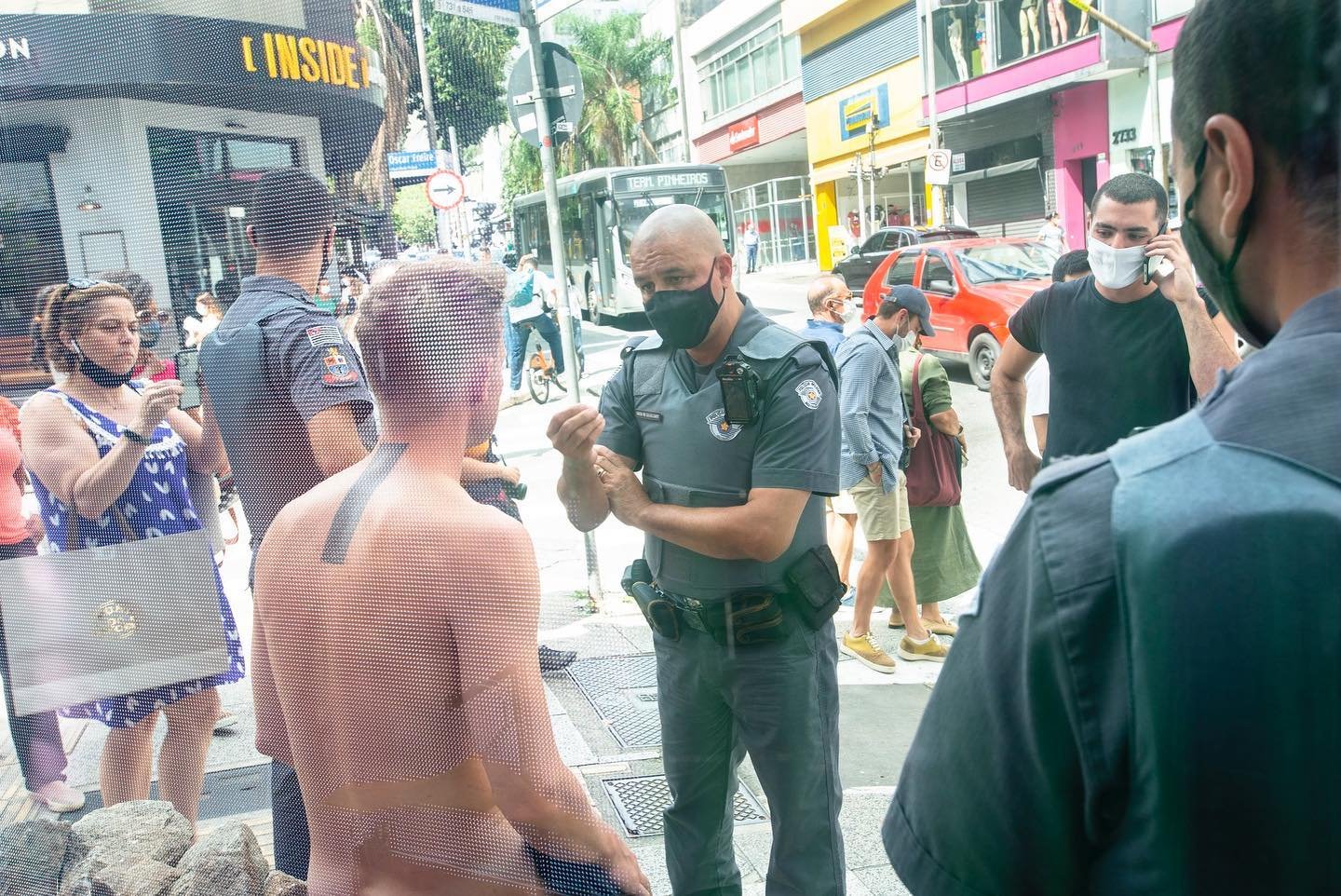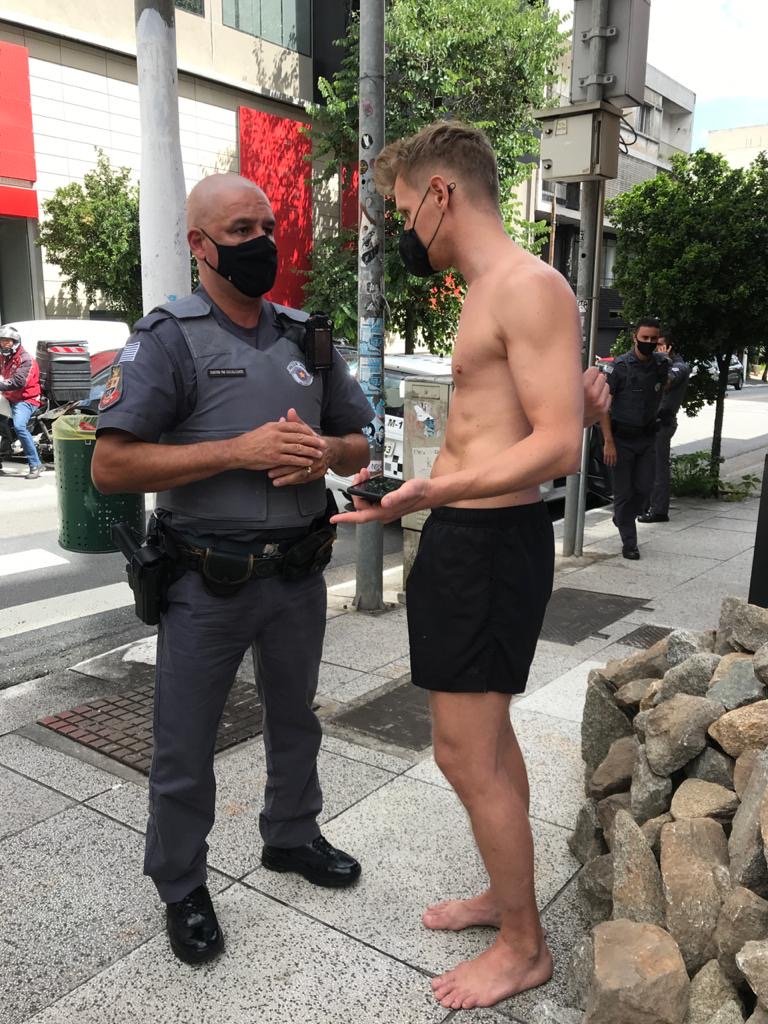A long durational guerrilla performance, São Paulo
February 15, 2021
Images by Ivan Padovani and Isabella Prata
Most humans have their own mysterious visions and insights, and the Russian performance artist Fyodor Pavlov-Andreevich, who has worked and lived between Brazil and Europe for over 10 years now, thinks he was a homeless resident of São Paulo’s Centro in his past life.
That’s probably the reason why Fyodor is so deeply connected to SP’s ghostly heart, practically inhabited by those who have nowhere else to go. In his performances and films of this period, Pavlov-Andreevich has questioned the sense of time, space and other limits, knowing that homelessness essentially reduces all of those limits down to zero.
With the humanitarian crisis that São Paulo is facing today, homeless people are slowly losing their traditional spots to sleep, commute and survive. São Paulo’s infamously hostile architecture is penetrating the city, leaving no escape for those in need. The Mayor’s office has recently made the complicated lives of those surviving with no shelter even more tragic by installing sharp rocks all around the usual areas where the homeless set up their tents and place their mattresses: under the city’s viaducts and bridges. The rocks placed under the bridges all around the city have been an ultimatum to the homeless: “there is no space for you in town, you should disperse.” Or, as the wife of one of the governors recently put it in a media interview: “Stop giving them money! They won’t disappear this way!” The Brazilian elite wants them to disappear—that’s clear enough.
With this in mind, and in the spirit of the heroic efforts by São Paulo-based Catholic priest Padre Julio Lancellotti and his parishioners, who for many years now have been offering boundless support to those with no roof over their heads, Fyodor decided to place his new guerrilla work right in the middle of the most luxurious neighborhood of São Paulo, the area where the homeless people are less welcome than anywhere else in the city.
His long durational work “The Sharp Rocks,” conducted on the 15th of February on the corner of rua Oscar Freire and rua Augusta, saw Pavlov-Andreevich seated nude, quietly and motionlessly, on a pile of the very same rocks that the city authorities used to express their hostile attitude towards the world’s most humiliated category of citizens. Fyodor sat on top of this little hill for almost three hours, interrupted three times by the arrival of the military police over the course of his protest. This silent action celebrated the attempts of contemporary art to talk about the most vulnerable and abandoned areas of life, when no other way remains to reach out to those in power making the wrong decisions. Fyodor attempted to connect the people who live their daily lives in their homes to those Others who do so in a completely different manner, thereby building a bridge under which those Others could peacefully sleep.
